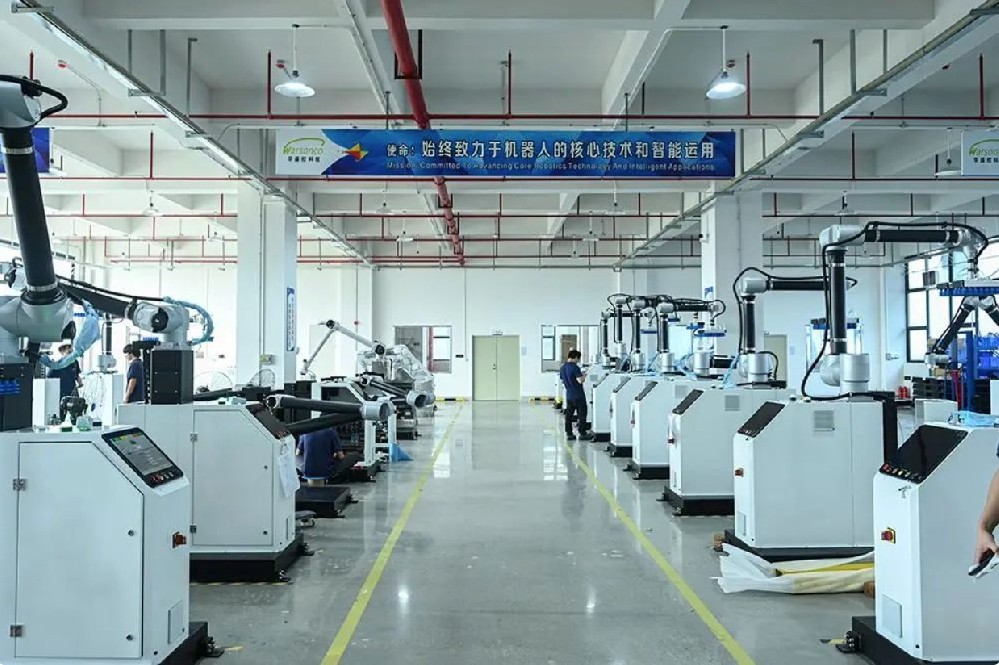Robots with extremely small palletizing error: accurate and efficient, leading new changes in warehousing and logistics

In today's rapidly developing technology era, the warehousing and logistics industry is ushering in an unprecedented change. The robot with extremely small palletizing error has become the leader of this change with its accuracy and efficiency. They are like precise "craftsmen", showing extraordinary charm on the stage of warehousing and logistics.
These palletizing robots have extremely high accuracy and can achieve almost zero errors in tedious palletizing operations. They are equipped with advanced sensors and control systems, which can sense information such as the surrounding environment and the location, shape and other information of the goods in real time. Through precise calculations and precise motion control, the robot can accurately stack goods on top of each other, whether neatly rectangular cargo or irregularly shaped items, it can be easily dealt with. This accuracy not only greatly improves the efficiency of palletization and reduces errors and waste caused by manual operations, but also provides a solid foundation for the subsequent links of warehousing and logistics.
In the practical application of warehousing and logistics, the efficiency of palletizing robots is fully reflected. The traditional manual palletization method often requires a lot of manpower and time, and is prone to fatigue and errors, resulting in insufficiency of palletization. The palletizing robot can work continuously for hours or even longer, without being affected by fatigue and emotions, and always maintain an efficient working state. They can quickly and accurately complete the palletizing task according to preset programs and instructions, greatly improving the operating speed of warehousing and logistics. Robots can also realize automated warehousing and logistics processes through collaborative work with other logistics equipment, further improving overall efficiency.
In addition to precision and efficiency, the palletizing robot also has strong adaptability and flexibility. Within different storage environments and cargo types, they can quickly adapt to a variety of work needs through simple programming and adjustment. Whether in large automated warehousing centers or in small distribution warehouses, palletizing robots can give full play to their advantages and provide enterprises with efficient palletizing solutions. Moreover, with the continuous advancement of technology, the functions of palletizing robots are also constantly expanding and upgrading. For example, some advanced palletizing robots have the ability to navigate autonomously and path planning, and can freely shuttle through the warehouse to complete more complex palletizing tasks ; Some robots can also achieve intelligent identification and sorting of goods by combining them with artificial intelligence technology, further improving the intelligence level of warehousing and logistics.
The emergence of robots with extremely small palletizing errors has not only brought huge changes to the warehousing and logistics industry, but also had a profound impact on the development of enterprises. For enterprises, the use of palletizing robots can improve the efficiency and quality of warehousing and logistics, reduce operating costs, and enhance the competitiveness of enterprises. The automated operation of the robot can also reduce the safety hazards caused by manual operations and improve the safety of the working environment. With the continuous maturity and popularization of robotics, companies can also improve their intelligence level by introducing robots and lay a solid foundation for future development.
To achieve the widespread application of robots with extremely small palletization errors in the warehousing and logistics industry, some challenges need to be overcome. The cost of robots is still high and may be unbearable for some small businesses. The technology research and development and maintenance of robots require professional talents, which also puts higher requirements on enterprises. When robots work in collaboration with humans, they also need to solve some problems of human-computer interaction and collaboration to ensure the safety and efficiency of their work.
Robots with extremely small palletizing errors are leading new changes in the warehousing and logistics industry due to their accuracy, efficiency and strong adaptability. With the continuous progress of technology and the gradual reduction of costs, we believe that palletizing robots will play an increasingly important role in the future warehousing and logistics field, and make greater contributions to the development of enterprises and the progress of society.